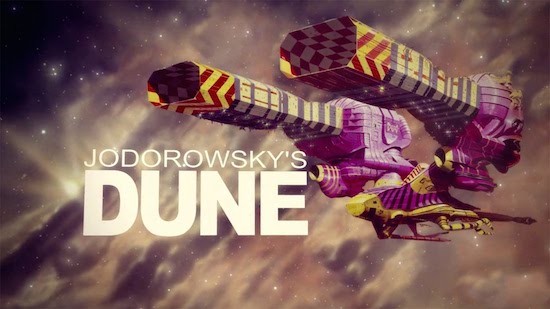A few weeks back, I watched the documentary Jodorowsky’s Dune. In case you don’t know the basic story, the film recounts director Alejandro Jodorowsky’s attempt to make Frank Herbert’s science fiction masterpiece Dune into a film in the early 1970’s. It isn’t giving anything away to say that Jodorowsky’s film was never made but what’s interesting about this story is how far the film planning got before the studios pulled the plug. This is why many film historian’s call it: “The greatest film never made.”
A Success from Failure
So why make a documentary about a director who failed to get his film made? Besides it being an interesting historical anecdote, the sheer enormity of the plan that Jodorowsky had for the film is staggering. This was a guy with vision like few directors have ever had. The colossal failure of such a gigantic pre-production process really is unique in the history of Hollywood.
What really comes through though is how this failure of a film project spawned so many other projects after. The documentary ends with a series of subsequent films that were heavily influenced by Jodorowsky’s storyboards and concept designs. This film that never was has resonated in hollywood throughout nearly every other science fiction film since.
A Man with a Vision
Above all else, the film really shows the power of an artist with a vision. Jodorowsky assembled some of the biggest names in the movie business, from actors, to storyboard artists, to concept-designers, it is a “who’s who” list of individuals that would go on to be the biggest names in movies in later years.
“The lesson is, someone who truly believes in their art, who is utterly devoted to their project, who has a plan and can articulate that goal from their heart can attract the best. Others will follow that kind of passion.”
Here’s some of the critical attributes Jodorowsky has that allowed him to get such a crazy and overly ambitious project so far along:
Passion – Jodorowsky believed in his film. It was all he thought or talked about when he was preparing it. 100% of his creative energy was channeled towards the film.
Negotiation – There were all kinds of actors, studio executives, and artists that had different ideas about where the film should go and why they wanted to be involved. Jodorowsky was quite clever in negotiating with each person to get them what they really wanted while still getting them to contribute their talents to his vision.
Emotional involvement – Jodorowsky wasn’t just doing a job. He wasn’t just making a fun movie. He truly believed his film would change the world. It had nearly become a pseudo-religion, the concepts, the themes, the power of what he was creating. Everyone else latched onto that belief and wanted to be involved in something bigger than themselves.
The Legacy of Jodorowsky’s Dune
With the recent tragic death of H.R. Giger, the legacy of this film is even more timely. Dan O’Bannon and H.R. Giger met while working on Jodorowsky’s Dune. They formed a creative bond and when the Dune project collapsed, they went on together to a little project called Alien. Dan O’Bannon would go on to write Ridley Scott’s Alien and of course Giger would do some of the most amazing and influential creature/production design in the history of science fiction and horror. The echoes of this “un-film” are still being heard today and all because of one man’s passionate vision.
